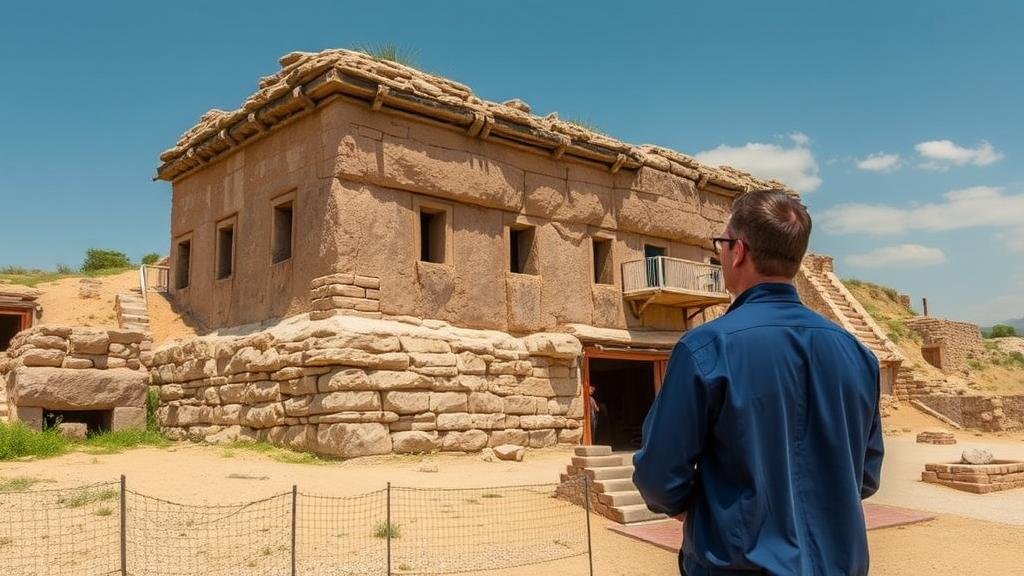Investigating the ancient city of Çatalhöyük and its unique societal structure.
Investigating the Ancient City of Çatalhöyük and Its Unique Societal Structure
Situated in modern-day Turkey, Çatalhöyük is one of the most significant archaeological sites of the Neolithic period, dating back to approximately 7500 BCE. This ancient city provides vital insights into early human civilization, showcasing a unique societal structure that defies conventional understanding of hierarchical societies. As one of the earliest known urban centers, Çatalhöyük offers a fascinating glimpse into the life of prehistoric communities.
Historical Context
Çatalhöyük, located near the Konya Plain in Turkey, flourished between 7500 BCE and 5700 BCE. It is characterized by its dense population and distinct architectural style, with closely packed mud-brick houses that often shared walls. Archaeologists estimate that at its peak, the city housed around 5,000 to 8,000 residents.
The site was discovered in the 1960s by British archaeologist James Mellaart, and subsequent excavations have revealed impressive layers of habitation, showcasing a continuous settlement over millennia. It has become a key site for understanding the transition from nomadic lifestyles to settled agricultural communities.
Unique Societal Structure
Unlike many contemporary societies, the social structure of Çatalhöyük appears to lack a clear hierarchy. Instead of government or monarchal systems, the community functioned in a more egalitarian manner, promoting cooperation among its inhabitants. This is evident in the following aspects:
- Shared Resources: Evidence suggests that resources such as food and tools were distributed communally rather than hoarded by a ruling class. The inhabitants cultivated crops like wheat and barley, as well as raising livestock, contributing to a diverse diet.
- Cooperative Living: Houses in Çatalhöyük were built closely together, with roofs serving as pathways. interconnectedness of the architecture facilitated social interactions and communal activities, fostering a sense of community.
- Burial Practices: The dead were often buried beneath house floors, indicating a reverence for ancestors and a shared belief system, rather than a focus on individual status or wealth.
Art and Culture
Çatalhöyük is renowned for its rich artistic heritage. Wall paintings and sculptures, often found in domestic contexts, depict a variety of themes ranging from hunting scenes to abstract motifs. These artworks reveal insights into the spiritual and social consciousness of the community.
The presence of shrines and symbolic representations suggests that ritualistic or religious practices played a significant role in daily life. “Mother Goddess†figurines, found in many households, indicate a potential reverence for fertility and nature, reflecting the communitys agrarian lifestyle.
Technological Advancements
The inhabitants of Çatalhöyük were not only skilled farmers but also efficient craftsmen. Tools made from obsidian, a volcanic glass known for its sharpness, were primarily used for hunting and food preparation. The community also produced pottery and textiles, which were essential for trade and domestic uses.
The technological innovations of Çatalhöyük, such as the early use of kilns for pottery, facilitated advancements in daily living and contributed to the city’s economic success. This stands in stark contrast to other Neolithic sites that relied heavily on rudimentary tools.
Real-World Applications
Understanding the societal structure of Çatalhöyük challenges existing assumptions about the development of social hierarchies and governance. Researchers can draw parallels between ancient egalitarian societies and contemporary cooperative movements that emphasize communal living and resource sharing. Plus, the study of this ancient city can inform current urban planning by advocating for community-centric designs that encourage social interaction and connectivity.
Conclusion
To wrap up, the investigation of Çatalhöyük reveals a complex and multifaceted society that thrived over 9,000 years ago. Its unique societal structure, characterized by equality and shared resources, challenges the mainstream narrative of social hierarchies in early human settlements. As we continue to unearth the mysteries of this remarkable site, we gain invaluable lessons about cooperation, community, and the foundations of societal development.



